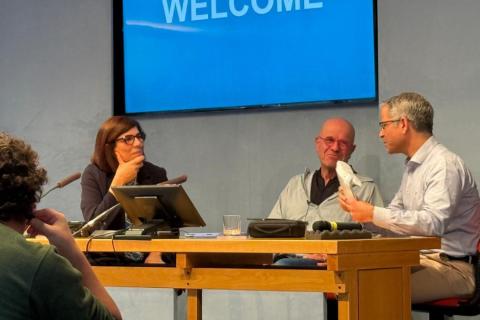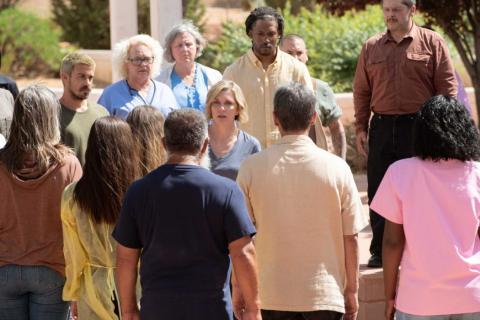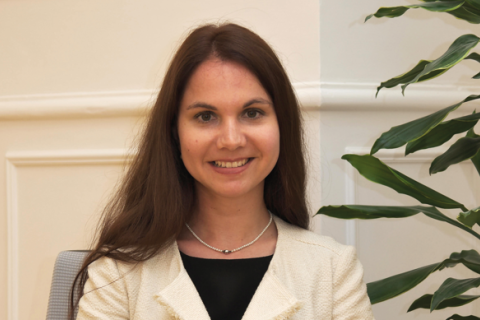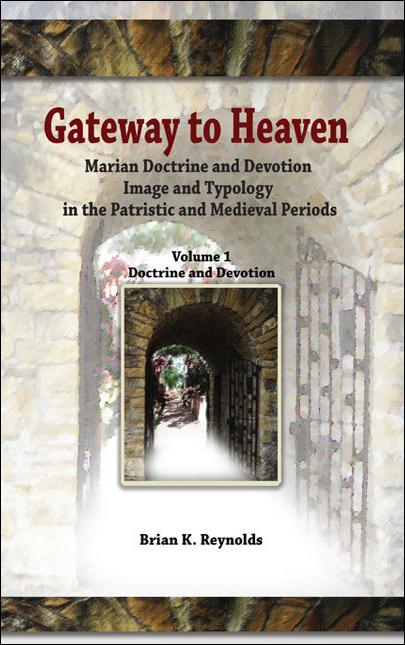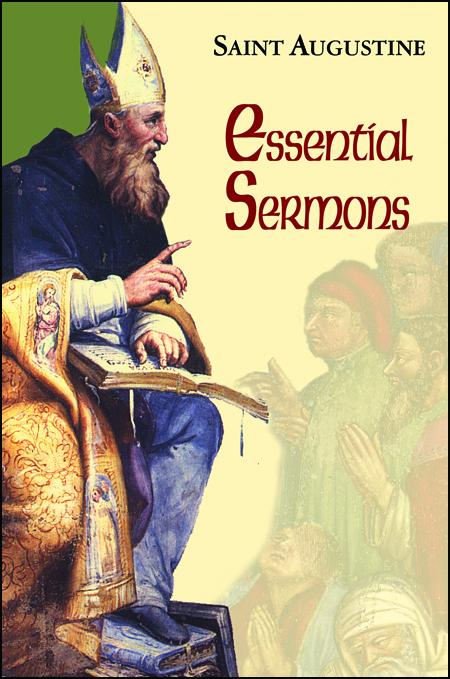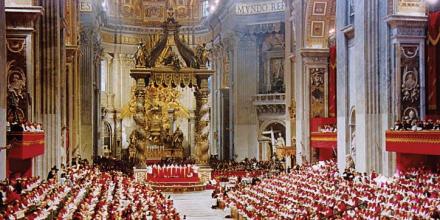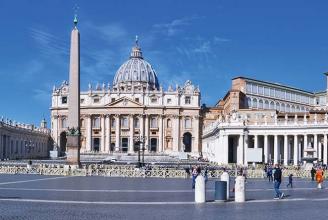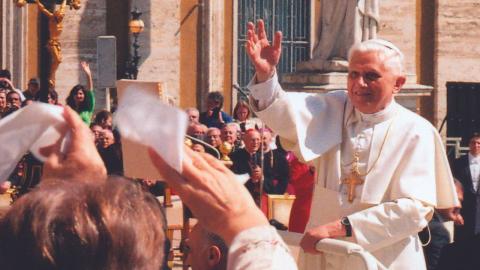
Photo courtesy of focolaremovement.com
Did the saints have friends? We are continually inspired and moved by the personal relationship various saints had with God, a spiritual bond that surpassed all others in their lives. But what about their human connections that offered support and affection? Here are some examples of how saints (and potential future saints) lived their friendships.
St. Basil (330–379) and St. Gregory of Nazianzus (329–390)
The great friendship between these two saints of the early Church has reverberated throughout Church history. Both men were ordained and lived as monks; however, Basil urged his friend at a certain point to return home and assist his father.
Basil wrote extensively in defense of the true faith against the heresy of Arianism. When he died, Gregory took up the call, preaching and writing about the Trinity and other doctrines of the faith.
Gregory, in the flowery language of his era, sums up the value of their friendship and how they walked together toward union with God:
“When, in the course of time, we acknowledged our friendship and recognized that our ambition was a life of Christian perfection, we became everything to each other. We shared the same lodging, the same table, the same desires, the same goal. Our love for each other grew daily warmer and deeper…
“Our single object and ambition was virtue, and a life of hope in the blessings that are to come; we wanted to withdraw from this world before we departed from it. With this end in view, we ordered our lives and all our actions. We followed the guidance of God’s law and spurred each other on to virtue. If it is not too boastful to say, we found in each other a standard and rule for discerning right from wrong.” (St. Gregory, Liturgy of the Hours)
St. Augustine (354–430)
For this saint, who converted to Christianity at the age of 31, friendship was a central value, a lifeline. He described in his Confessions how his perception of friendship changed throughout his life. As a young adult, he treasured the deep mutual understanding he found with his friends:
“We could talk and laugh, help each other in small ways; we enjoyed doing lots of things together, reading some book, going somewhere… Sometimes we would be very serious together, sometimes we were able to act the fool together. Sometimes when we argued with each other it was not a bitter argument but like the kind of argument you might have with yourself... Each of us had something to learn from each other and something to teach in return.” (Book IV, Confessions, 14)
Later, he discovered an even deeper meaning of being friends in Christ, when he formed a Christian community in his family home in Tagaste. “Love has drawn you here; but love of what: If of me, this too is good, for I desire to be loved by you, but not for myself. Since, therefore, I love you in Christ, do you in return love me in Christ.”
St. Benedict (480–548) and St. Scholastica (480–543)
Scholastica and Benedict were more than friends; they were siblings — twins, in fact! Benedict is regarded as the father of monastic life — he founded 12 monastic communities in Italy and left the Church his Rule of Saint Benedict as a legacy — and Scholastica was the foundress of the Benedictine nuns.
Because of the restrictions of their contemplative lives, Benedict and Scholastica were only able to visit with each other once a year. When together, they spent the entire day praising God and talking about sacred things.
During one such visit, Scholastica asked her brother to prolong his stay so they could talk more about the delights of the spiritual life. When he expressed regret and concern that he should not do so, she lowered her head and prayed. At once there were flashes of lightning and claps of thunder, and a torrential downpour ensued, preventing Benedict from returning to his cell and Scholastica from walking home to her monastery.
They ended up conversing the whole night. When Scholastica died three days later, Benedict rejoiced “in her great glory and thanked almighty God with hymns and words of praise. He then sent his brethren to bring her body to the monastery and lay it in the tomb he had prepared for himself. Their minds had always been united in God; their bodies were to share a common grave.” (Dialogues by St. Gregory the Great)
St. Francis (1181–1226) and St. Clare (1194–1253)
These two saints gave up everything to serve the poor and reflect Christ. They formed a deep spiritual friendship, and Francis often relied on Clare for encouragement and advice.
In a dark moment, he shared that all he wanted to do was live as a hermit, but he was constantly being called away to preach the Gospel of “holy poverty.” Clare reminded him that God was not calling him only for his personal salvation but also that of others.
Francis was at one point concerned about what people would think of their special friendship. He remarked to Clare that they should not meet again until the snow melted, and the roses bloomed. In response to Clare’s immediate anguished prayer, the snow instantly melted, and roses appeared in front of them. This was a sign to both of them that their friendship was one made in heaven.
At the end of his life, Francis was able to live in a hermitage close to Clare’s monastery, near to the person who truly understood his soul and who loved him with an unconditional love.
St. Teresa of Ávila (1515–1582) and St. John of the Cross (1542–1591)
These two saints met when Teresa was 52 and John was 25. Teresa needed a male counterpart to help with the reformation of the Carmelites, and they developed a strong friendship throughout their years of working together.
They were able to appreciate each other’s God-given talents and support each other in using them for the glory of God. Their friendship sustained them through the challenges and opposition to the reforms they instituted.
Their personalities were almost polar opposites. Teresa filled a room with her presence. She loved socializing and entertained others with her witticisms. John, on the other hand, preferred to be on the sidelines and was gentler in nature. Both, however, had keen intellects, wisdom and common sense and exercised strong leadership when needed.
“Their likenesses advanced them toward the same goal, while their differences enhanced the spirit that would permeate the reform.” (Fr. Thomas Dubay, S.M., Fire Within) And they both emphasized the importance of accepting spiritual darkness, suffering and pain as a way of partaking in Jesus’ suffering on the cross.
Servant of God Alberto Michelotti (1958–1980) and Servant of God Carlo Grisolia (1960–1980)
Alberto Michelotti and Carlo Grisolia, both from Genoa, Italy, shared a profound friendship, though they had quite different characters. They encouraged each other to follow Jesus and to put the Gospel into practice. The friends are now both on their way to sainthood: on October 8, 2021, Alberto and Carlo were declared Servants of God.
The secret of Alberto and Carlo’s lives was the discovery and practice of the Focolare spirituality, a collective path that leads to reaching sanctity together.
Alberto was an engineering student and the head of a Focolare youth group. He loved to put himself in the last place to serve others. He was also a mountain climbing enthusiast, and on August 18, 1980, he fell during an ascent and died in an icy gorge in the Maritime Alps.
The day after Alberto’s death, his friend Carlo was diagnosed with one of the most malignant types of tumors. So began his 40-day sprint and passing on the baton “to meet Jesus,” during which he often affirmed that, as always, Alberto was there with him to give him support.
So, what can we learn from these saintly friendships? Friends can encourage and guide each other, offering solace and joy. Friends can share the holy journey and have conversations that increase each other’s understanding and love of our faith.
As St. Thomas Aquinas put it, “There is nothing on this earth more to be prized than true friendship.”


